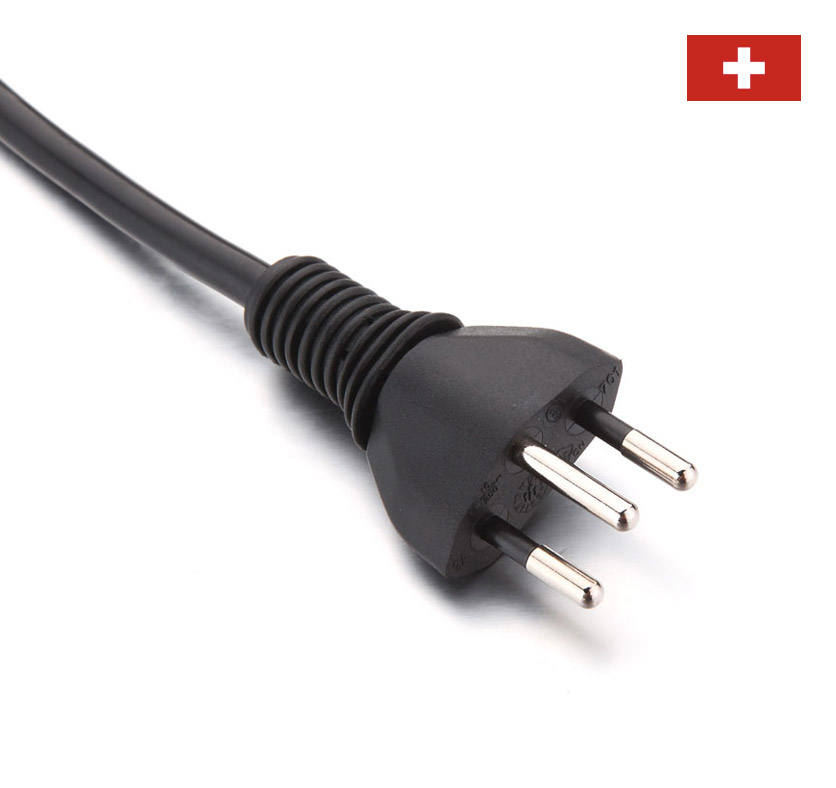
The Swiss standard is SN 441011, known until recently as SN SEV 1011, and its title is Plugs and socket-outlets for household and similar purposes. Testing and approval is carried out under ESTI, the Federal Inspectorate for Heavy Current Installations, sometimes known as Electrosuisse; approved products are marked S+ or SEV.
Swiss plugs are only used in Switzerland and Liechtenstein. Whilst Brazilian and South African plugs appear very similar, they are not compatible due to the different offset of the earth pin.
Generally, plugs and sockets can be rated at 10A or 16A, and single phase or three phase: sockets will only accept equally or lower rated plugs. Single phase use is rated up to 250V AC, and 3 phase up to 400V AC (Volts, alternating current). Switzerland is unique in have compatibility between single phase and three phase plug and socket types. Typ 1x are 10A versions, and Typ 2x are 16A rated versions. Plugs and sockets have the central earth pin offset, which ensures polarity: the plug can only be inserted one way round. The earth contacts within the socket are brought forward 3mm, so the protective earth contact is always made first and broken last. The pins on all plugs are 19mm long.
Since 2009 all 10A rated plugs must have 8mm partially insulated line and neutral pins.
This is because older socket outlets were not recessed, and it was possible to partially insert the plug and still touch the now live current carrying contacts, a potentially dangerous situation. There is no requirement for partial insulation on the 16A versions because the sockets have always been recessed. The shape of the recess prevents dangerous (i.e. unearthed) compatibility with plugs that have similar pins (e.g. French or German plugs) that fit into non-recessed outlets. The recessed socket design also provides structural support to the plug.
There is no requirement for childproof shutters in any of the sockets.
